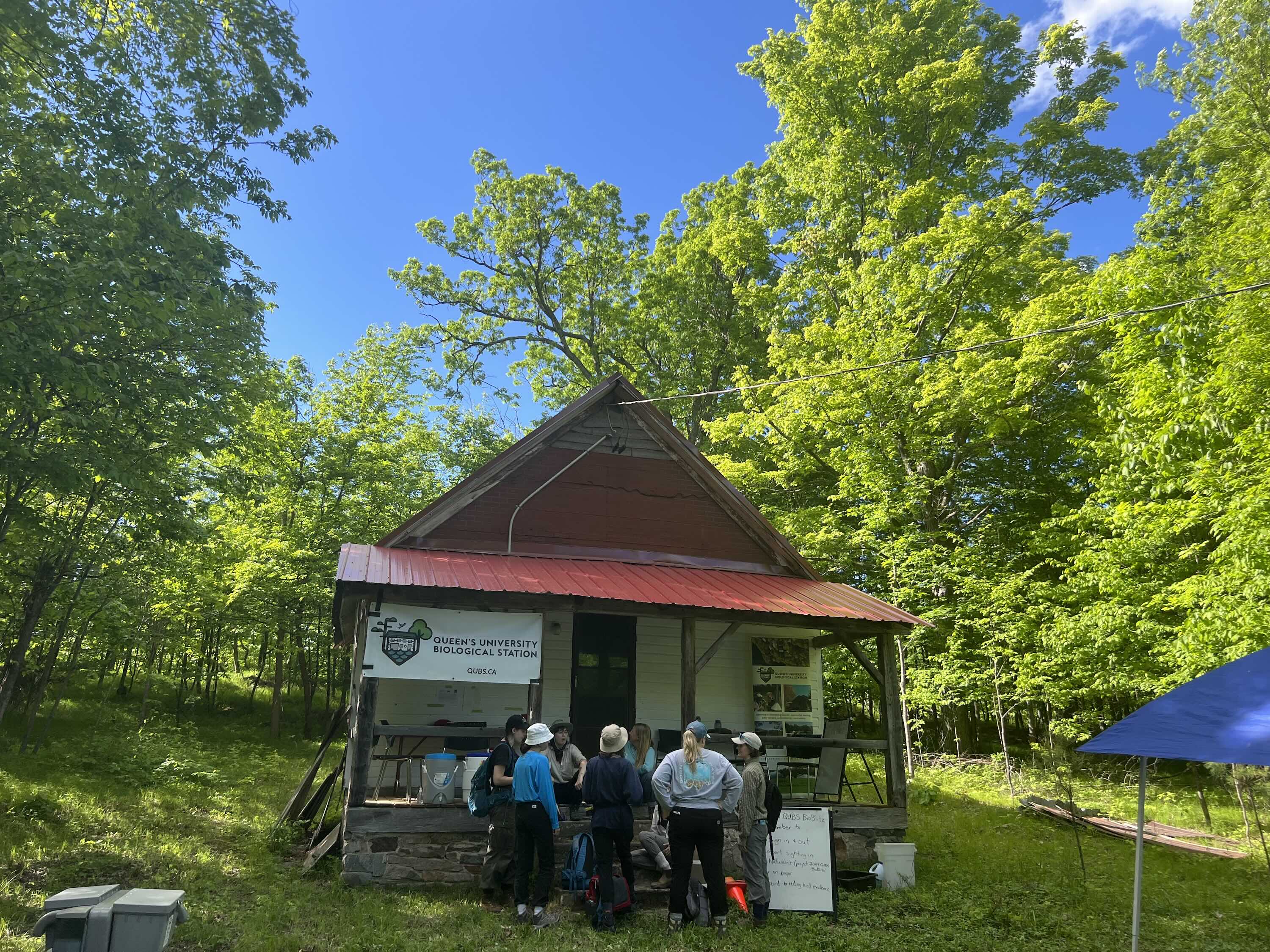QUBS Bioblitz 2024

QUBS BioBlitz occurring over a 24 hour period on May 24/25, 2024 on the beautiful Massasauga Tract. Historic one-room school house was used as our base camp.
The Queen's University Biological Station (QUBS) is one of the premier scientific field stations in Canada. For almost 70 years, researchers and students have gathered at QUBS to conduct leading-edge research and participate in courses spanning ecology, evolution, conservation, geography, and environmental science.
Take a look at our field safety tips
Creating an equitable & healthy learning environment here
Careers - job opportunities at QUBS
Queen’s University is situated on traditional Anishinaabe, Haudenosaunee, and Huron-Wendat Territory. The Queen's University Biological Station is situated on unceded Algonquin Anishinaabe territory and is a part of the Algonquin Land Claim by the Algonquins of Ontario currently under negotiation with the federal government of Canada. The Anishinaabe and Haudenosaunee Nations lived in relationship with the lands that are collectively a part of QUBS. The Dish with One Spoon wampum belt covenant agreement between the Anishinaabe and Haudenosaunee nations governs this land-base. In the Dish with One Spoon agreement, the dish symbolizes shared territory, while the spoon indicates that people are eating out of the single dish, hunting in the shared territory and expected to share the game and fish, not only with each other, but also in a manner that leaves enough for the future.
Acknowledgement of these facts requires recognition of the precolonial history of this land and the peoples who lived here and continue to live here. The cultures and spiritualities of Indigenous peoples are connected to the land and the land is an integral part of their ways of knowing and living. These knowledge systems are continually evolving in relation to the land and its other inhabitants both human and other than human. The Kingston Indigenous community continues to reflect the area’s Anishinaabek and Haudenosaunee roots. There is also a significant Métis community and there are First Peoples from other Nations across Turtle Island present here today.
QUBS is taking strides to address historical and contemporary injustices in an effort to work towards reconciliation. Actions include the creation of the Queen’s University Indigenous Land-Based Learning STEM (Science, Technology, Engineering and Math) (QUILLS) program equipping local grades 7-10 STEM teachers with the materials and training they need to center Indigenous land-based practices in their Science teaching. The creation of the interpretive signs and trail app stations you will see today also reflect QUBS’s commitment to the revitalization of local Indigenous languages and associated ways of knowing and being. We are also applying for other funding that would make this a more welcoming space for Indigenous researchers including an Indigenous centre and partnerships with the urban Kingston community, Akwesasne and Tyendinaga and we hope many other First Nations. Additionally, in all school programming, QUBS acknowledges that reconciliation is not a means to an end but instead an ongoing journey that must be steeped in ongoing reciprocal relationships established between Indigenous and non-Indigenous Canadians and between Canadians and the land itself. The projects mentioned today mark just the beginning of an ongoing commitment to reconciliation.